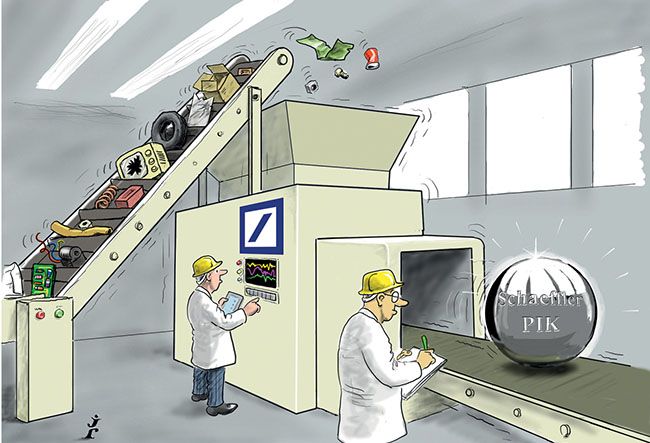Well-oiled machine
In a tough year for high-yield supply, Deutsche Bank was there for tricky and innovative trades both great and small, retaining its crown as IFR’s Europe High-Yield Bond House of the Year.
European high-yield bond bankers had to work harder than ever to win business in 2016. A lack of LBO activity made for lacklustre volumes in fee-rich M&A deals, while the strength of demand for cov-lite loans also killed the steady stream of loan-to-bond refinancing that has kept the market ticking over in previous years.
In this tough environment, no bank was able to transact as many deals as Deutsche Bank across the full gamut of European high-yield, from large liquid bonds for Double B rated issuers to tricky deals for niche credits at double-digit yields.
And no deal exemplified Deutsche’s ability to bring large complex trades together with pitch-perfect execution more than Schaeffler’s record-breaking €3.6bn-equivalent PIK toggle.
Deutsche was lead-left on the German bearing maker’s landmark trade in September, which saw €2.25bn and US$1.5bn raised at holdco IHO Verwaltungs.
“This was the biggest euro deal this year by some distance, let alone one from a holding company PIK toggle,” said Diarmuid Toomey, head of European high-yield capital markets at Deutsche.
The monster deal was the largest post-crisis payment-in-kind toggle bond and also smashed records for the risky asset class’s lowest coupons. A €750m five-year tranche was priced at a yield of 2.75%, putting it among the tightest high-yield trades in 2016, despite coming from a deeply subordinated holdco.
For Deutsche, it was the culmination of years of work with Schaeffler, after the bank first shepherded the company to the bond market in 2012, when its capital structure was still creaking under the weight of debt incurred from a mistimed bid for German tyre-maker Continental in 2008.
“We’ve led every deal for them, as well as the consent solicitation in 2014 that made this all possible,” said Henrik Johnsson, co-head of global DCM and head of debt syndicate in EMEA.
“This is the deal that finally cut the last remaining link between the opco and the holdco – and it could set the stage for IHO to become a significant investment vehicle.”
The complete separation of any credit links between opco and holdco was only made possible by a bold decision to increase the deal by more than €1bn late in the process, allowing Schaeffler to repay a legacy intercompany loan in full.
But it was not just on these headline-grabbing trades that Deutsche excelled. The bank was just as comfortable at bringing together racier deals for companies in tough sectors.
A €625m-equivalent deal for Swedish refiner and fuel retailer Preem in April was the year’s first PIK transaction. As a company in an unloved sector that had to restructure its debt five years ago, it was the polar opposite of Schaeffler’s PIK, and cleared at yields over 12%.
Deutsche also led the first-ever euro high-yield bond for an oil and gas E&P company, a €400m deal for DEA Deutsche Erdoel in September that cleared and traded well despite printing in a rocky market.
And Deutsche masterminded a crucial refinancing in the same month for Spanish online travel company eDreams Odigeo, a company many thought would not be able to access capital markets ever again after its unsecured bonds plunged to distressed levels in 2014.
Despite tackling trickier trades, Deutsche did not pull a single deal in 2016, something that cannot be said for every bank in a year fraught with sudden surges of volatility.
“We don’t speculatively launch transactions,” said Toomey. “And our distribution is bigger than anyone else’s. Issuers and investors know that we are a safe pair of hands.”
As a result, a number of repeat issuers – such as Ireland’s Eir and Spain’s NH Hotel Group – turned to Deutsche to lead trades for the first time, having appointed different banks as lead-lefts on previous deals.
Deutsche was also one of the few European banks to have a leading market share in bringing US high-yield issuers to the euro market.
The bank was lead-left on reverse-Yankee trades for Belden, Spectrum Brands, Crown, Cott and Goodyear during the awards period. Crown achieved the tightest pricing for a reverse-Yankee high-yield deal in 2016, raising eight-year money at 2.625%.
To see the digital version of this review, please click here.
To purchase printed copies or a PDF of this review, please email gloria.balbastro@tr.com



